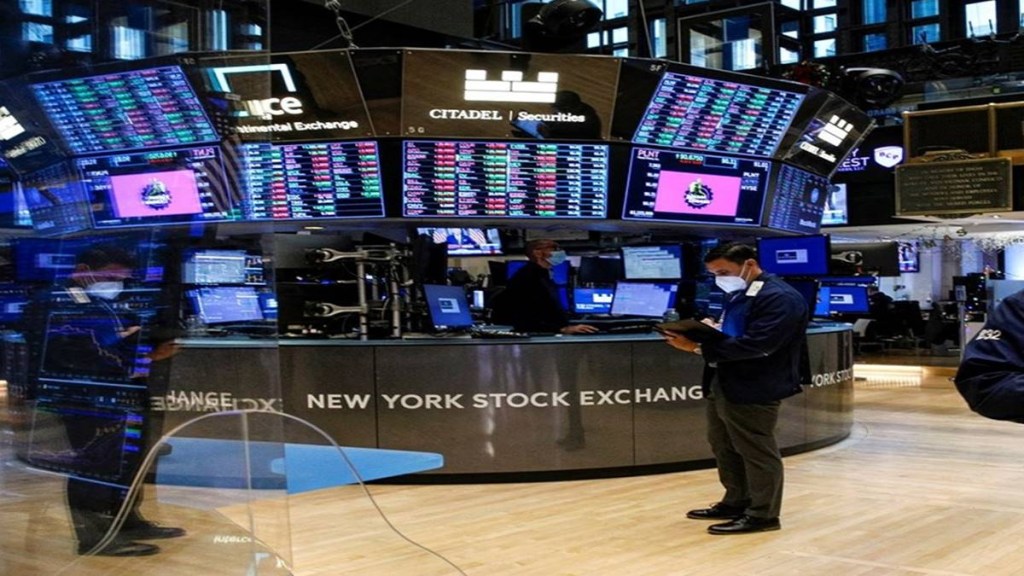A slew of interest rate-sensitive investing strategies took a beating through August as bets faded that the US Federal Reserve was on the cusp of easing monetary policy.
From buying meme stocks and dumping the dollar to betting against swings in stock prices, a swath of popular trades have become losers; stocks have bled more than $5.5 trillion while a bond rout pushed yields to the highest in more than a decade. Among the winners: Hedge funds betting that bond yields will rise anew. It’s clear that Jackson Hole’s hawkish message has been received loud and clear.
“There is a very strong likelihood risk assets have registered their highs for this year,” said Michael O’Rourke, chief market strategist at JonesTrading.
Here is an overview of the trading action in charts.
The backdrop for the global market tumult is higher yields at precisely the wrong time.
According to a JPMorgan Chase & Co survey, investors recently amassed the biggest overweight bond positions in years, only to be hit with fresh losses this month. As money managers revise up their economic forecasts – the Atlantic Fed model pegs the current growth rate at an astonishing 5.9% — longer-maturity bonds have been hit particularly hard.
Those securities have lost 4% so far this month, putting them on track for a 3% plunge for the year. That’s causing fresh pain for Wall Street money managers who still reeling from a record 29% wipeout last year.
No wonder strategists at Bank of America Corp., Goldman Sachs Group Inc. and TD Securities have been abandoning their dip-buying call as market losses deepened.
“Folks that extended out the yield curve this year were thinking about the previous cycle of low inflation and slow growth coming back,” said Gregory Peters, co-chief investment officer at PGIM Fixed Income. “The muscle memory of a quick cutting Fed is still quite prevalent. That’s been swatted out and it was too premature to extend duration.”
In another case of bad timing, currency bets in some of the biggest markets have gone awry.
As yields moved higher, the Bloomberg dollar index has rallied about 2% in August, bouncing back from the lowest in more than a year. That’s hurt those speculators who have assembled positions against the currency.
For example, hedge funds and other leveraged investors have recently taken the biggest bets on the euro in two years while maintaining a bullish stance on the British pound, only for the latter to weaken against the dollar to a two-month low.
In the world of stock investing, some of the best performers this year have quickly turned into losers as a speculative frenzy has come to an abrupt pause. The Roundhill MEME ETF (ticker MEME) advanced 70% in the first seven months of the year, only to tumble 23% in August.
More broadly, despite the AI mania in markets, betting on tech stocks is an easy trading game no longer. The Nasdaq 100 is headed for its worst month of the year, while the triple-leveraged ProShares UltraPro QQQ fund (TQQQ) has dropped 14%. The latter signals a breather after a bubbleicious rally at more than 160% that has stoked market-wide valuation concerns on Wall Street.
“The historical record is pretty clear that it’s September that’s the worst for market punters. In recent decades that’s been true for investors in bonds as well as equities, which rather suggests that we should be ready for things to stay spicy next month.”
— Cameron Crise, macro strategist
Bank of America Corp.’s Michael Hartnett — one of the most bearish voices out there — expects a further pullback in risky assets and trouble for technology equities “rather than era of new AI rules” in the second half. The counterpoint comes from David Kostin at Goldman Sachs, who says there’s room for investors to further increase equity exposure if the economy stays on course for a soft landing.
Placing a bet on calm stocks markets has been a winning call for much of this year, but the peace is fraying.
Take the 1x Short VIX Futures ETF (SVIX), which thrives when stocks markets are sanguine. It has declined 5% this month as Wall Street’s favorite volatility gauge, the so-called VIX, spiked to the highest level since May at one point.
It’s also been a good stretch for bond managers who have accumulated record short positions in the futures market — which would have paid off handsomely as Treasuries sold off.
All year long as asset managers kept buying government debt, hedge funds took the other side. In the world of 10-year Treasury futures alone, bearish wagers pursued by the fast money have more than doubled since the beginning of the year.
One caveat: Their profits may be exaggerated because bearish wagers could be part of an arbitrate strategy – known as the basis trade — to exploit the minute price differences between the futures and cash bonds. That means gains on short-futures positions may have been offset by the losses in the cash market.
With richly valued speculative stocks plunging, hedge funds have netted gains by going long underpriced names while selling short their expensive peers, in a strategy known as equity long short.
For example, a Goldman Sachs index tracking the favored shares of fast-money investors outperformed a gauge of the most-shorted equities by 18 percentage points this month. That’s the most since the firm started to compile the data in 2017.

